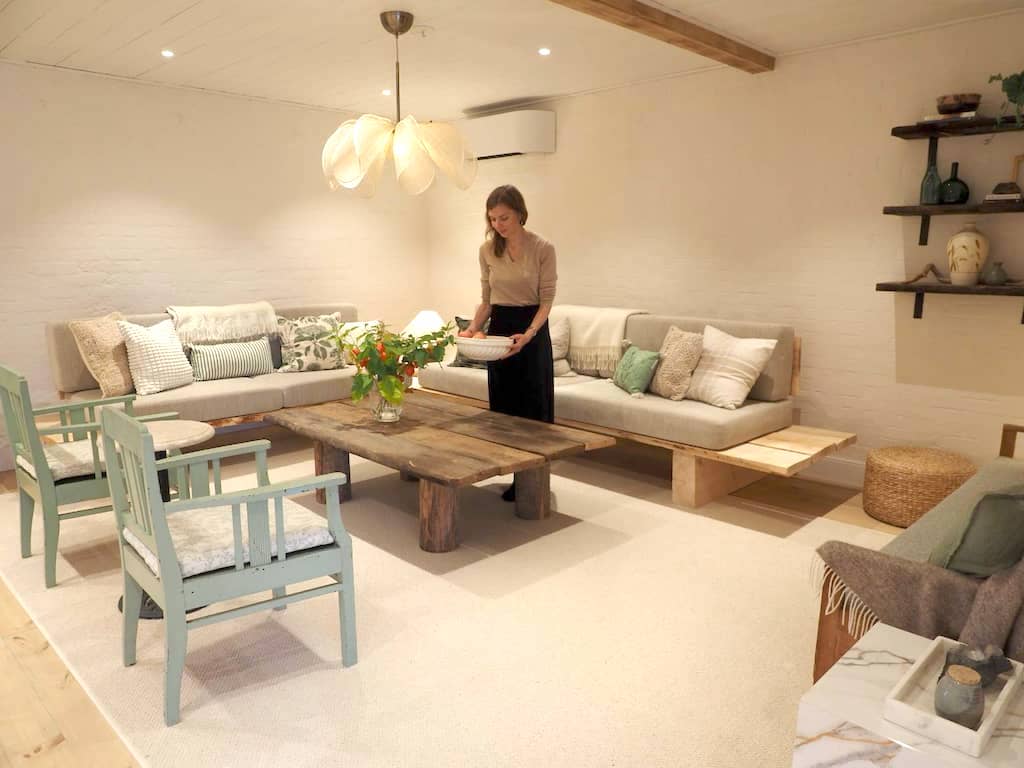
The Power of Interior Design for Well-Being: Boost Your Personal Growth and Authenticity
Have you ever stepped into a room that felt instantly calming, as if it supported your well-being just by being there? Or perhaps sensed tension in a space that didn’t quite sit right? This is the impact of conscious interior design on well-being—spaces thoughtfully crafted to enhance comfort, mental clarity, and emotional balance. Research shows that aligning inner and outer spaces can, for example, reduce stress and enhance authenticity, bringing you closer to your best self. Let’s explore the research on how interior design for well-being can elevate everyday life.
1. The Power of Place Attachment
“Place attachment” refers to a psychological concept showing how our environment directly impacts our sense of comfort and belonging. Environmental psychologist Dr. Sally Augustin (2014) explains that spaces reflecting our personal preferences can reduce stress and elevate well-being. When we see elements of ourselves mirrored in our surroundings—whether at home, in the office, or favorite spaces—we feel more authentic and grounded.
The American Society of Interior Designers (2015) also found that spaces designed around individual values contribute to productivity and well-being. This research underscores that interior design for well-being not only improves mood but fosters a space for authentic expression.
2. The Role of Neuroscience in Environmental Impact
Neuroscientific research supports the idea that interior design for well-being can promote relaxation and satisfaction. Dr. Eve Edelstein (2013) explored how specific elements like lighting, color, and layout influence brain activity, directly impacting mood and well-being. Her studies show that when people occupy spaces that feel meaningful or comforting, their brain activity reflects greater relaxation and satisfaction, helping them connect more deeply with themselves.
3. Incorporate Nature to Boost Well-Being
Research by Terrapin Bright Green (2014) indicates that nature-connected interiors can reduce stress and promote calm. Integrating nature in your space not only supports mental clarity but also fosters a connection to yourself, adding a restorative layer to your environment.
4. Designing Spaces to Reflect Who We Want to Become
Designing spaces that reflect who we aspire to become taps into a powerful concept from self-affirmation theory (Steele, 1988), which emphasizes how surroundings shape how we view ourselves and our potential. Psychologist Dr. Ian Robertson (2015) explains that transforming our spaces to embody our aspirations positively impacts our confidence and motivation, allowing us to pursue goals with greater clarity and enthusiasm. When we apply interior design for well-being to create environments that reflect who we want to become, these spaces affirm our growth and help us manifest our fullest potential, both personally and professionally.
Piettolan Design Project: A Real-Life Example of Interior Design for Well-being
In The Piettolan Tila project, I began by exploring the client’s vision for her future self, shaping a space that would genuinely nurture her growth and aspirations. To bring the calming influence of nature indoors, we installed a breathtaking 6-meter forest wall, creating a living connection to the outdoors. Old doors were replaced with windowed ones to welcome natural light, enhancing flow between the interior and surrounding landscape. Every choice—from non-toxic, natural materials to thoughtfully curated textures—was made to reflect her values and create a sanctuary of calm, inspiration, and authenticity.
Practical Tips for Creating Aligned Spaces
Here’s how to start aligning your inner and outer spaces through interior design for well-being:
1. Identify Core Values: Determine what matters most to you and find ways to represent these values in your physical environment.
2. Create Functional Spaces: Ensure your environment supports your daily habits and goals.
3. Consider using biophilic design to bring natural elements indoors—such as plants, organic textures, and natural light.
4. Design for Aspiration: Set up spaces that reflect who you aspire to be, using decor, layout, and intentional elements that align with your growth goals.
By taking these steps, you can create a space that nurtures well-being and personal growth, ultimately inviting more authenticity, purpose, and success into your life.
Heal with me for a sec.
My soul friend, if you feel it is time to start transforming your home or office into a space of greater well-being, choose one of the points above and take your first step.
If you need help, I am here for you.
References
- Augustin, S. (2014). The Science of Place Attachment and Well-Being. Insights from environmental psychology on how personal preferences in design influence mood and stress levels.
- American Society of Interior Designers (ASID) (2015). The Impact of Design on Well-being and Productivity. Findings on how personalized environments contribute to well-being and productivity.
- Edelstein, E. (2013). Neuroscience of Design: Lighting, Color, and Layout in Psychological Well-being. Research showing how specific environmental elements impact brain activity and relaxation.
- Terrapin Bright Green (2014). The Economics of Biophilia: Why Designing with Nature in Mind Makes Financial Sense. This study details the health and well-being benefits of biophilic design, which supports mental health and reduces stress.
- Steele, C. M. (1988). Self-Affirmation Theory: How Environments Reflect and Shape Our Identity. Steele’s work on how spaces can reinforce self-perception and drive.
Essi Koski-Lammi
Essi Koski-Lammi is an Interior Designer, Intuitive Healer, and Inner Alignment Coach with over 20 years of experience in energy work. She guides purpose-driven women and businesses to reconnect with their authentic essence through inner alignment coaching, strategic business channeling, and conscious interior design. Essi’s mission is to create harmony and beauty in both inner and outer spaces, allowing clarity, success, and well-being to flow naturally.


You may also like

Cyclical Living: Embrace the Cycles of Nature at Home
August 22, 2023
What is the Healing Home?
May 23, 2024
